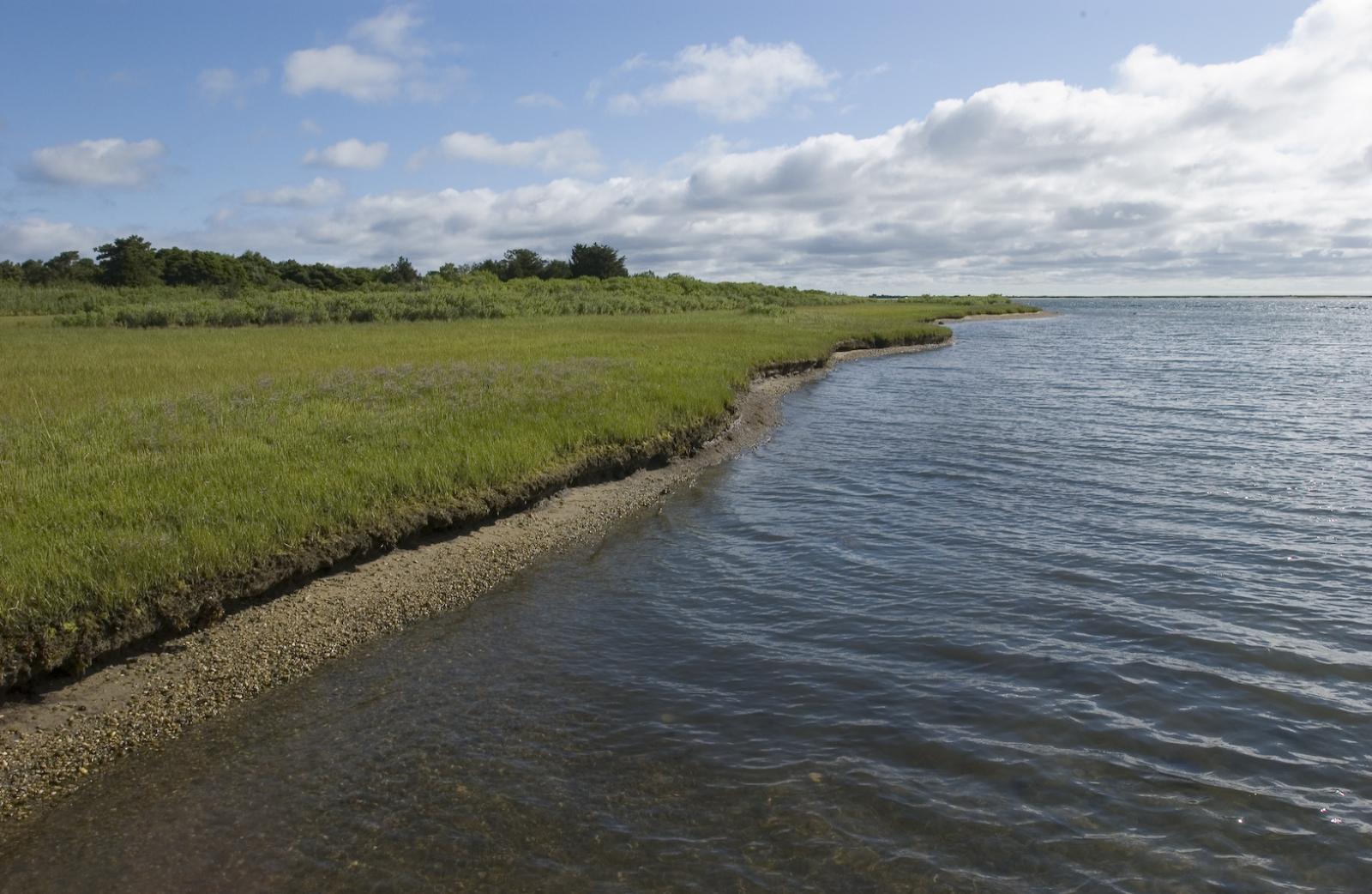In a repeat of a presentation given to the Oak Bluffs selectmen last month, the Edgartown selectmen Monday heard serious warnings about reducing nitrogen levels in Sengekontacket Pond.
With members of the Joint Committee on Sengekontacket in attendance, the selectmen heard that based on a thorough review of the Massachusetts Estuaries Project study on the pond, nitrogen levels need to be reduced and removed.
The committee said that Sengekontacket exceeds a healthy nitrogen limit, which is .35 milligrams per liter per day. The worst areas are Major’s Cove and Trapp’s Pond, they said, and Farm Neck and Ocean Heights are also sometimes above the limit.
Remediation proposals include removing 60 per cent of septic waste water in the Major’s Cove watershed and 100 per cent of the septic waste water in the Trapps Pond watershed and reducing fertilizer.
At the meeting, committee member Terry Appenzellar held a bag of fertilizer, which she said was the main culprit when it came to nitrogen overloading. She called for a focus on prevention, not nitrogen removal.
Shellfish constable Paul Bagnall said that planting shellfish can also help nitrogen levels. He called this solution a small yet delicious piece of the puzzle.
Selectman Art Smadbeck asked about problems with waterfowl. Ms. Appenzellar said that while birds increase bacteria levels, humans are the significant nitrogen contributor.
Committee members encouraged collaboration between towns, and suggested that the towns adopt the findings and propose bylaws or designate the area a district of critical planning concern.
Additional suggestions Tuesday included adopting a septic system bylaw similar to one in Tisbury or a fertilizer ban similar to a New Jersey law.
The selectmen agreed to forward minutes from the meeting to the town conservation commission.





Comments
Comment policy »